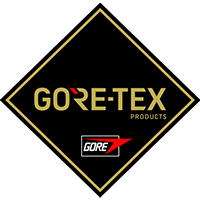How do you cope with temperatures of 180 °C in an enclosed area in which a huge wood fire is raging? How should you react when your protective clothing comes into contact with hot steam reaching several hundred °C? These are the sort of topics covered by the firefighting training courses of FeuReX GmbH. At five different locations in Germany, firefighters can receive expert tuition on how to tackle serious structural fires, safely and effectively. Kitted out with Gore's newest fabric technologies, they also get the chance to demonstrate just how important high quality protective clothing is.

ESSENTIAL EXERCISES FOR PERSONAL SAFETY
"The most important part of the course is experiencing being exposed to heat. The course participants wear breathing apparatus and their own protective clothing." "They experience for themselves in our steel container how heat affects their bodies, both from a physical and a mental point of view," "says FeuReX general manager Josef Ottinger, who also heads up the training venue in Oberhausen." "Plus, they learn to recognise when exactly to leave a room to avoid suffering burn injuries." "At temperatures of 160°C to 180°C measured at the height of a door handle, the course participants break off the training session after spending between 3 and 5 minutes directly next to the fire in the wood-fired steel container. In the real-life situation of a fire in a normal room – the most commonly occurring fire incident – these are typically the temperatures at which they have to search for and rescue people while also putting out the fire.
Other procedures covered by the course include working in zero visibility conditions, how to behave when there is a high risk of a flashover occurring (involving the sudden ignition of flammable gases when the original fire is still smouldering), using thermal imaging cameras at the scene of the fire, and handling fire hoses with adjustable jet spray nozzles without sustaining property damage."

A KEY ASPECT: THE RIGHT PROTECTIVE CLOTHING
FeuReX attaches great importance to high quality protective clothing. Since 2017, all of its instructors have been kitted out with garments designed around Gore's latest fabric technologies: the revolutionary new GORE® PARALLON® clothing system is the first of its kind to position a thermal barrier between two membranes to deliver constantly high levels of heat and flame protection − when exposed to water from the outside as well as when the wearer produces a lot of sweat inside the garment. FeuReX has already purchased a total of 100 GORE® PARALLON® garments from manufacturer S-Gard Schutzkleidung in Heinsberg, Germany. Above all else, the instructors have expressed their satisfaction with the high levels of comfort and freedom of movement that this new class of fabric offers. They are also very happy with the way in which internal moisture moves through the layers. According to the instructors, they feel very comfortable wearing these protective garments, both in the fire container and on hot summer days. In addition, the GORE® PARALLON® System provides a high degree of insulation. Furthermore, the transition from a tolerably hot operational environment to a dangerously hot one takes place gradually - significantly enhancing the safety of the wearer.

FURTHER INFORMATION
The training courses are scheduled to take place in the following places:
Oberhausen, Gelnhausen, Landolfshausen-Potzwenden, Ludwigshafen/Oppau and Helmstedt.
More information about the course dates and contents can be found here.








































